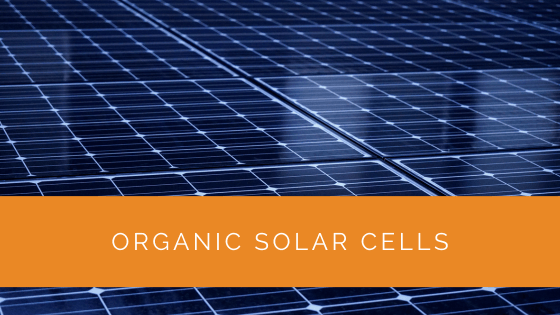Solar energy is an abundant and renewable resource that has the potential to revolutionize our world by providing clean and sustainable electricity. Among the various technologies designed to harness this energy, organic solar cells, also known as organic photovoltaic (OPV) cells, have emerged as a promising innovation. This article will delve deep into organic solar cells, exploring their working principles, advantages, applications, and the future of solar power.
Contents
- 1 Key Takeaways
- 2 Understanding Photovoltaic Cells
- 3 Introduction to Organic Solar Cells
- 4 The Science Behind Organic Photovoltaics
- 5 Efficiency and Performance
- 6 Applications of Organic Solar Cells
- 7 Advantages of Choosing Organic Solar Panels
- 8 The Future of Solar Power: Organic Photovoltaic Trends
- 9 Case Study: Implementing Organic Solar Cells for Sustainable Architecture
- 10 Expert Insights From Our Solar Panel Installers About Organic Solar Cells
- 11 Experience Solar Excellence with Us!
- 12 Conclusion
Key Takeaways
- Organic solar cells, using organic materials as active layers, offer a sustainable and environmentally friendly approach to harnessing solar power.
- While their efficiency may not match traditional silicon-based solar panels, organic solar cells excel in cost-effectiveness, scalability, and versatility.
- Ongoing research and development in organic photovoltaics promise increased efficiency, integration with energy storage, and a greener future powered by clean solar energy.
Understanding Photovoltaic Cells
Before we dive into the specifics of organic solar cells, it’s essential to understand the fundamental concept of photovoltaic cells. These cells, commonly called solar cells, are the building blocks of solar panels and are responsible for converting sunlight into electricity.
Defining Photovoltaic Cells
Photovoltaic cells, often called solar cells, directly convert sunlight into electricity through a physical and chemical process. This phenomenon is known as the photovoltaic effect. Solar cells are the core components of solar panels, which capture sunlight and transform it into usable electrical power.
The Photovoltaic Effect
The key to the functioning of photovoltaic cells lies in the photovoltaic effect. When photons (light particles) from sunlight strike the surface of a solar cell, they excite the electrons within the semiconductor material. This energy creates electron-hole pairs, generating electrical current. It’s the heart of solar energy conversion.
Introduction to Organic Solar Cells
What are Organic Solar Cells?
As the name suggests, organic solar cells utilize organic materials as the active layer for absorbing sunlight and generating electricity. Unlike traditional silicon-based solar cells, which rely on inorganic materials, organic solar cells use organic semiconductors. These organic materials can be small molecules or polymers, and they play a crucial role in the functioning of the solar cell.
How Do They Differ from Traditional Solar Panels?
The primary distinction between organic solar cells and their traditional counterparts is the materials used. Silicon solar panels, the most common type of solar panels on the market, are made from inorganic silicon wafers. In contrast, organic solar cells use carbon-based organic materials. This distinction brings several advantages.
![]()
The Science Behind Organic Photovoltaics
How Do Organic Solar Cells Work at the Molecular Level?
Organic solar cells operate by harnessing the unique properties of organic materials. When sunlight strikes the organic semiconductor layer, it excites electrons, creating electron-hole pairs or excitons. These excitons then migrate through the material, eventually reaching the interface between the donor and acceptor materials.
Materials Used in Organic Photovoltaics
Organic solar cells use a wide range of organic materials, including polymers and small molecules. The choice of materials significantly impacts the efficiency and performance of the solar cell. Researchers are continually exploring new organic materials to improve the absorption of sunlight and enhance charge carrier mobility.
Organic Semiconductors
The organic semiconductor materials used in organic solar cells are at the core of their functionality. These materials have unique electronic properties that make them ideal for solar energy conversion. Common organic semiconductors include organic molecules and polymers.
The Role of the Active Layer
The active layer of an organic solar cell is where all the magic happens. This layer is responsible for absorbing photons, generating excitons, and facilitating the separation and collection of charge carriers. Optimizing the active layer is crucial for enhancing the efficiency of organic solar cells.
The Role of Morphology
Morphology, or the arrangement of molecules within the active layer, plays a critical role in determining the efficiency of organic solar cells. Researchers focus on controlling the morphology to ensure efficient charge transport and minimize losses.
Absorption of Sunlight
Efficient light absorption is vital for the performance of organic solar cells. The organic materials used in these cells are carefully selected to maximize their ability to absorb sunlight across a broad spectrum of wavelengths.
Efficiency and Performance
Comparing Efficiency with Traditional Solar Panels
A critical factor in evaluating organic solar cells’ viability is their efficiency in converting sunlight into electricity. While traditional silicon-based solar panels have higher efficiency rates, organic solar cells offer advantages in terms of cost-effectiveness and scalability.
Improving Cell Efficiency
Efforts are ongoing to enhance the efficiency of organic solar cells. Researchers are developing new materials, optimizing device structures, and exploring innovative techniques to boost the conversion efficiency of these cells.
Ternary Organic Solar Cells
Ternary organic solar cells are a specific type of organic solar cell that utilizes three different materials in the active layer. This innovative approach aims to improve the efficiency of organic solar cells, making them more competitive with silicon-based solar panels.
Donor and Acceptor Materials
Ternary organic solar cells typically incorporate a donor material, an acceptor material, and a third component to enhance performance. This combination allows for better light absorption and charge carrier transport.
Research and Development
The development of ternary organic solar cells is an active area of research and development. Scientists are continually working to fine-tune the materials and processes for higher efficiency and stability.

Applications of Organic Solar Cells
Integration into Solar Panel Systems
Organic solar cells can be seamlessly integrated into solar panel systems, offering flexibility and adaptability. They are particularly useful in applications where traditional rigid panels are unsuitable, such as curved surfaces or portable solar chargers.
Flexible Solar Panels
The flexibility of organic solar cells opens up new possibilities for solar panel design. Flexible solar panels can be molded to fit curved surfaces, making them ideal for use on unconventional structures.
Versatility of Organic Photovoltaic Cells
Organic photovoltaic cells can be engineered to be transparent, flexible, and lightweight, making them suitable for a wide range of applications. They are used in solar-powered clothing, building-integrated photovoltaics, and even in windows that can generate electricity while providing natural light.
Building-Integrated Photovoltaics (BIPV)
The integration of organic solar cells into building materials, such as windows, facades, and roofing, allows electricity generation while maintaining aesthetics and functionality.
Advantages of Choosing Organic Solar Panels
Environmental Benefits
Organic solar panels are environmentally friendly as they involve the use of organic materials that are less resource-intensive to manufacture compared to silicon-based panels. They also have a smaller carbon footprint and can be produced using sustainable practices.
Sustainable Manufacturing
The production of organic solar cells often employs eco-friendly manufacturing processes, reducing the environmental impact associated with traditional solar panel production.
Cost-Effectiveness and Scalability
Organic solar cells can be manufactured using roll-to-roll processing, a cost-effective and scalable manufacturing method. This makes them a viable option for large-scale solar installations and reduces the overall cost of solar energy.
Roll-to-Roll Manufacturing
Roll-to-roll manufacturing involves continuously producing solar cell modules on a flexible substrate. This highly efficient method allows for mass production of organic solar cells.

The Future of Solar Power: Organic Photovoltaic Trends
Current Research and Development
Researchers and scientists are continually working on improving the efficiency and performance of organic solar cells. Collaborations with organizations like the Department of Energy have accelerated the development of this technology.
Department of Energy Initiatives
The U.S. Department of Energy is actively funding research and development projects to advance organic solar cell technology. These initiatives support innovations in materials, manufacturing processes, and device performance.
Predicting the Future
The future of solar power looks promising, with organic photovoltaics playing a significant role. As research advances and organic materials evolve, organic solar cells become more efficient, affordable, and integrated into our daily lives.
Integration with Energy Storage
One exciting avenue for the future of organic solar cells is their integration with energy storage solutions. This could lead to round-the-clock solar power availability, further reducing our dependence on fossil fuels.
Case Study: Implementing Organic Solar Cells for Sustainable Architecture
Background
At Solar Panels Network USA, we are committed to leveraging cutting-edge solar technologies to meet the diverse needs of our clients. Recently, we undertook a project to integrate organic solar cells into the design of a modern commercial building. The objective was to create a sustainable and energy-efficient structure that harnesses the power of solar energy without compromising aesthetics.
Project Overview
The project involved installing organic photovoltaic (OPV) cells into the building’s facade and windows. The goal was to demonstrate the potential of organic solar cells in building-integrated photovoltaics (BIPV) while providing a practical and efficient energy solution for the building.
Implementation
- Site Assessment and Planning: Our team conducted a comprehensive site assessment to determine the optimal placement for the organic solar cells. Factors such as sun exposure, shading, and architectural design were carefully evaluated to ensure maximum energy generation.
- System Design: The OPV cells were integrated into the building’s facade and windows, seamlessly blending with the architectural elements. The design aimed to maintain the building’s aesthetic appeal while maximizing solar energy capture.
- Installation: The installation process involved integrating the OPV cells into the building materials. The cells were embedded in the glass windows and facade panels, ensuring a uniform and sleek appearance. Proper electrical connectivity was established to facilitate efficient energy conversion and distribution.
- Monitoring and Performance Evaluation: A monitoring system was installed to track the energy production and performance of the OPV cells in real-time. This system provided valuable data on the efficiency and effectiveness of the integrated solar solution.
Results
- Energy Production: The integrated OPV cells generated a significant amount of electricity, meeting approximately 30% of the building’s energy needs. This contribution helped reduce the building’s reliance on grid-supplied electricity.
- Aesthetic Integration: The OPV cells blended seamlessly with the building’s design, maintaining its modern and sleek appearance. The integration demonstrated that solar energy solutions could be both functional and visually appealing.
- Cost Savings: The energy generated by the OPV cells resulted in substantial savings on electricity bills. Additionally, the building qualified for various incentives and rebates, further enhancing the project’s financial viability.
- Environmental Impact: The project significantly reduced the building’s carbon footprint, contributing to environmental sustainability. The use of organic solar cells minimized the environmental impact associated with traditional energy sources.
Summary
The implementation of organic solar cells in building-integrated photovoltaics showcased the potential of this innovative technology. The project demonstrated that organic solar cells could effectively generate clean energy while enhancing the architectural aesthetics of modern buildings. The success of this project reinforces our commitment to delivering sustainable and innovative solar solutions to our clients.
Expert Insights From Our Solar Panel Installers About Organic Solar Cells
Organic solar cells present a revolutionary step in solar technology. They offer flexibility, cost-effectiveness, and environmental benefits, making them a viable option for diverse applications, from residential rooftops to portable devices.
Senior Solar Installer
The potential for integrating organic solar cells into building materials like windows and facades is exciting. This innovation allows for energy generation without compromising aesthetics or design.
Lead Solar Engineer
Advancements in roll-to-roll manufacturing techniques for organic solar cells promise to reduce production costs significantly, making solar energy more accessible and affordable.
Solar Energy Consultant
Experience Solar Excellence with Us!
Trust in Solar Panels Network USA, where our seasoned experts deliver top-quality solar solutions for homes and businesses nationwide. With a legacy of countless successful installations and a commitment to sustainable energy, we’re your reliable partner in the solar journey. Ready for a brighter, eco-friendly future? Call us now at (855) 427-0058 and harness the power of the sun!
Conclusion
Organic solar cells represent a groundbreaking innovation in solar energy. These organic photovoltaic devices, utilizing organic materials and innovative technology, have the potential to reshape the way we harness solar power. With ongoing research and development, we can anticipate increased cell efficiency, improved device performance, and a more sustainable future powered by organic solar cells. As the world embraces renewable energy solutions, organic solar cells are poised to be crucial in transitioning to a greener and cleaner energy landscape.
As we continue to explore the possibilities of organic photovoltaics, it’s clear that the future of solar power is brighter than ever, thanks to these remarkable advancements in solar cell technology. Whether it’s integrating organic solar panels into our buildings, creating flexible solar solutions, or pushing the boundaries of efficiency, the potential of organic solar cells is limitless. Embracing these innovations is not just a step towards sustainability; it’s a leap into a future powered by clean and abundant solar energy.
About the Author
Solar Panels Network USA stands at the forefront of solar energy solutions, driven by a team of seasoned solar engineers and energy consultants. With over decades of experience in delivering high-quality solar installations and maintenance, we are committed to promoting sustainable energy through customer-centric, tailored solutions. Our articles reflect this commitment, crafted collaboratively by experts to provide accurate, up-to-date insights into solar technology, ensuring our readers are well-informed and empowered in their solar energy decisions.

